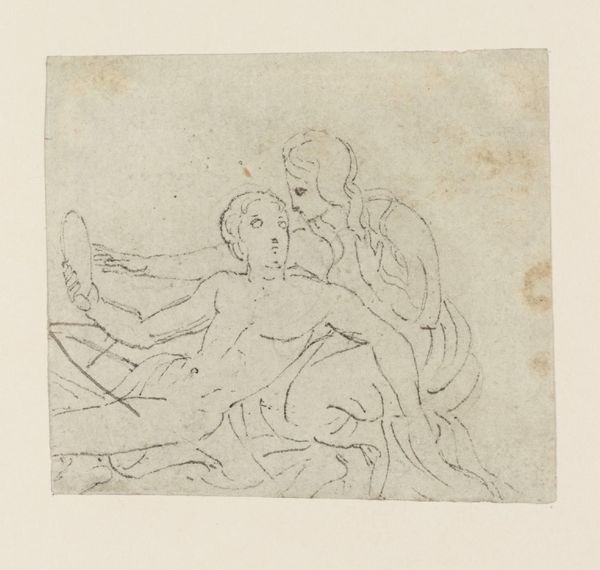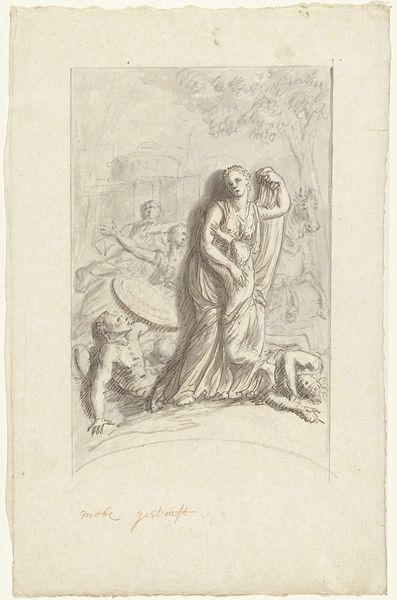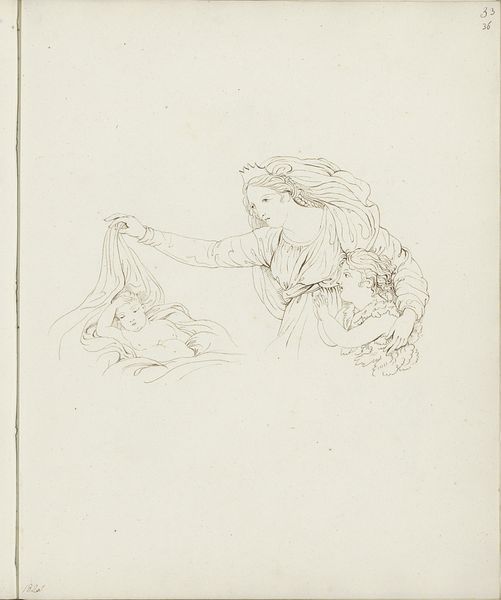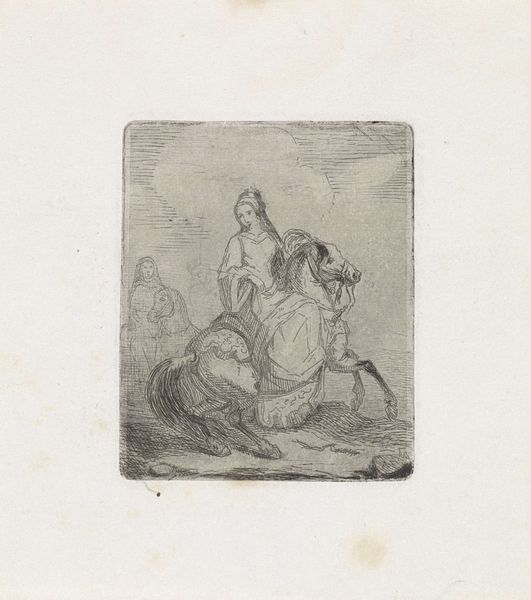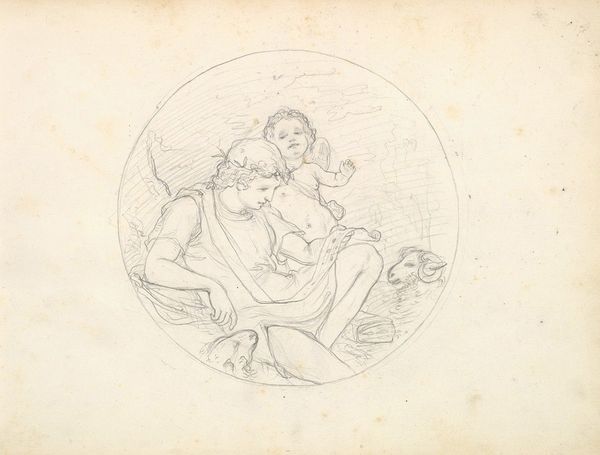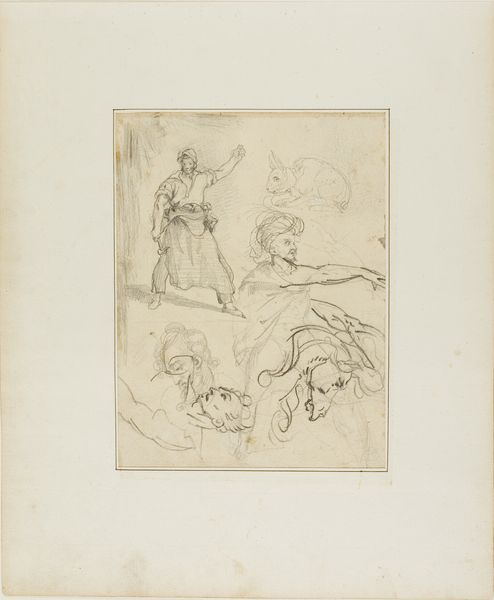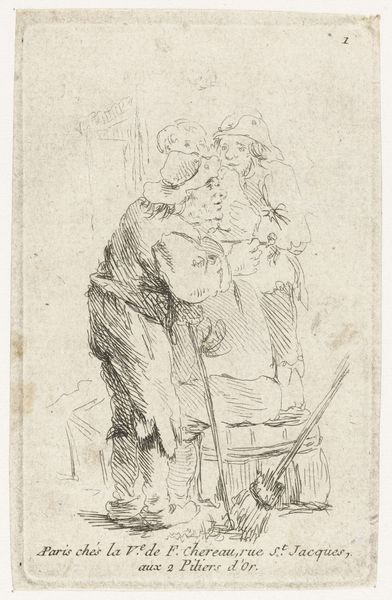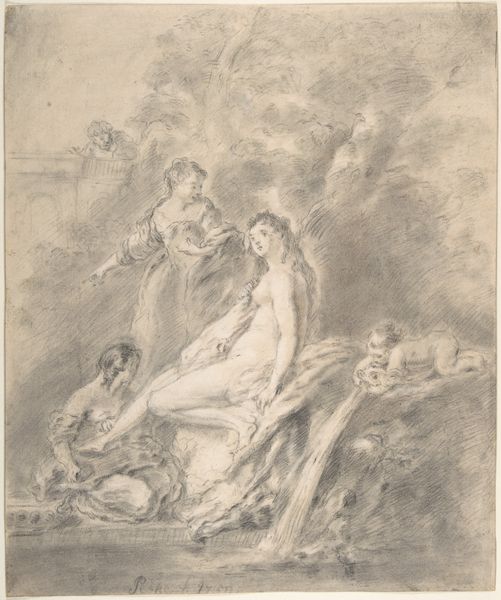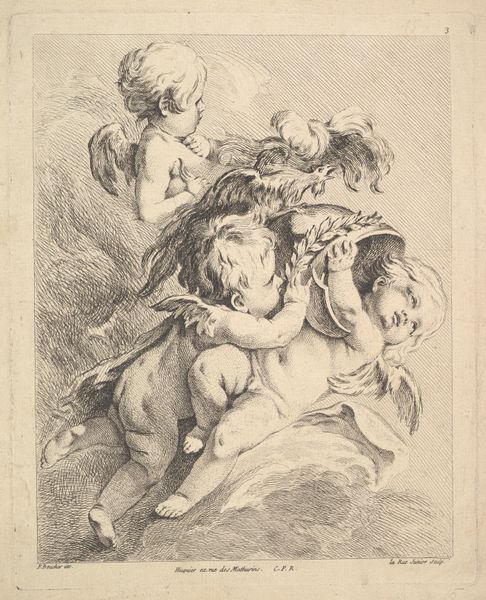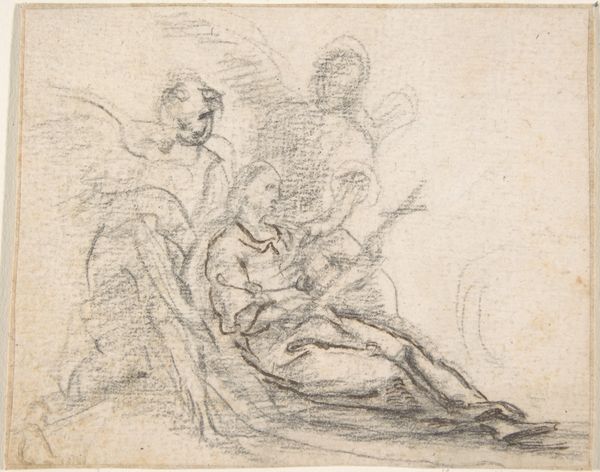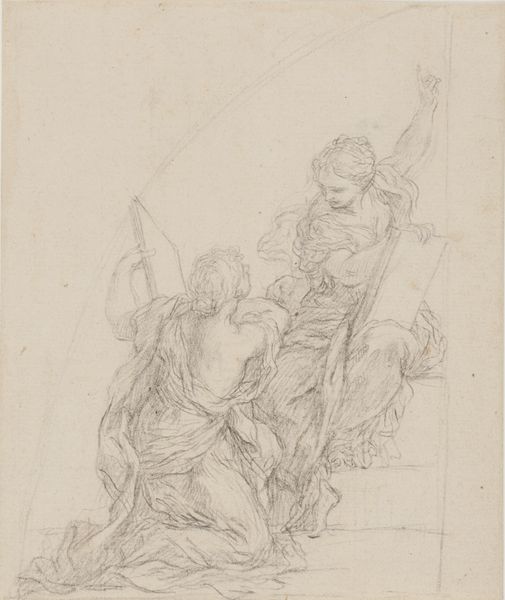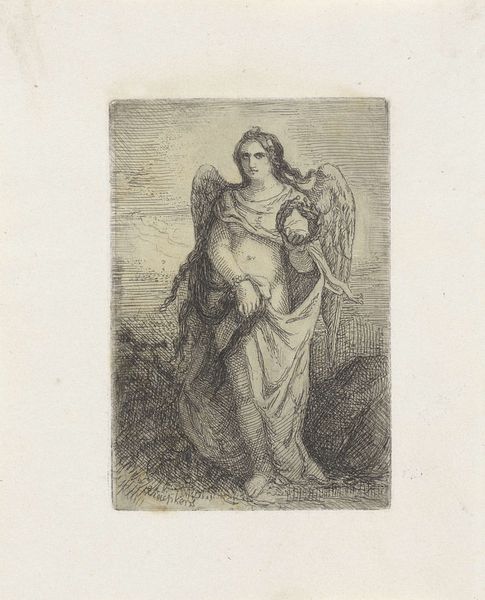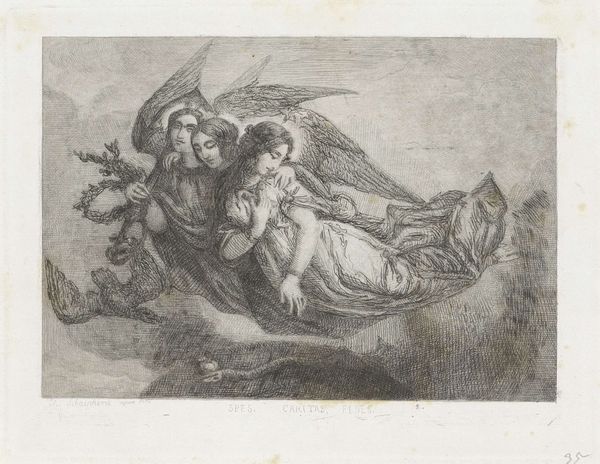
drawing, paper, pencil
#
pencil drawn
#
drawing
#
narrative-art
#
pencil sketch
#
charcoal drawing
#
figuration
#
paper
#
pencil drawing
#
romanticism
#
pencil
#
pencil work
Dimensions: height 207 mm, width 135 mm
Copyright: Rijks Museum: Open Domain
Curator: Ah, the Schaepkens! It’s lovely to see "Liefde (Caritas)" from 1843 presented so well. A delicate dance rendered in pencil on paper. What’s your first impression, Editor? Editor: I find it strangely comforting, like a dream fragment you can't quite place. There’s a swirling chaos in the background that almost swallows the figures, but the central mother figure projects so much calm. A bit unsettling and soothing, simultaneously. Curator: It’s interesting that you pick up on the comfort and the chaos. Schaepkens created this work during a period defined by both Romanticism's idealized vision of sentimentality, as well as an intense preoccupation with socio-political realities. We see many artists grappling with poverty, rapid urbanization, and social fragmentation—often circling back to the nurturing figure of motherhood. Editor: The babies, I guess, are classic cherubs. And this Madonna figure, a little melancholic, definitely idealized. Yet, the roughness of the pencil lends a kind of honesty, doesn't it? The wings aren’t perfect, a bit tattered at the edges... Like she’s had a hard day’s work! Curator: That perceived "roughness," as you call it, serves a crucial purpose. Schaepkens employs line work to create depth and shadow—a dramatic technique consistent with the broader art-historical understanding of Romanticism, but certainly diverging from traditions in, say, Neoclassical painting, which came before it. The sharp contrasts that make the bodies stand apart from the dark swirls—symbolic protection against earthly fears. Editor: Symbolism's fun! Almost feels like you could dream up a backstory. And the medium, the simple pencil... it almost humanizes the divine. I am thinking maybe, she needs to rest... and what are the real struggles of motherhood when abstracted from our actual lives... The paper becomes so fragile too, as a perfect canvas for exploring these ideas... Curator: Indeed, we return to that interplay between artistic process and the socio-political landscape, offering endless points of departure to interrogate questions about the artwork’s enduring impact across gender, identity, and other markers that constitute our intersectional experience of art. Editor: I love seeing that fragility exposed, almost urging us to be tender. Thank you, it’s definitely got me thinking about how we elevate this icon of mothering but sometimes lose the nuances in-between!
Comments
No comments
Be the first to comment and join the conversation on the ultimate creative platform.
